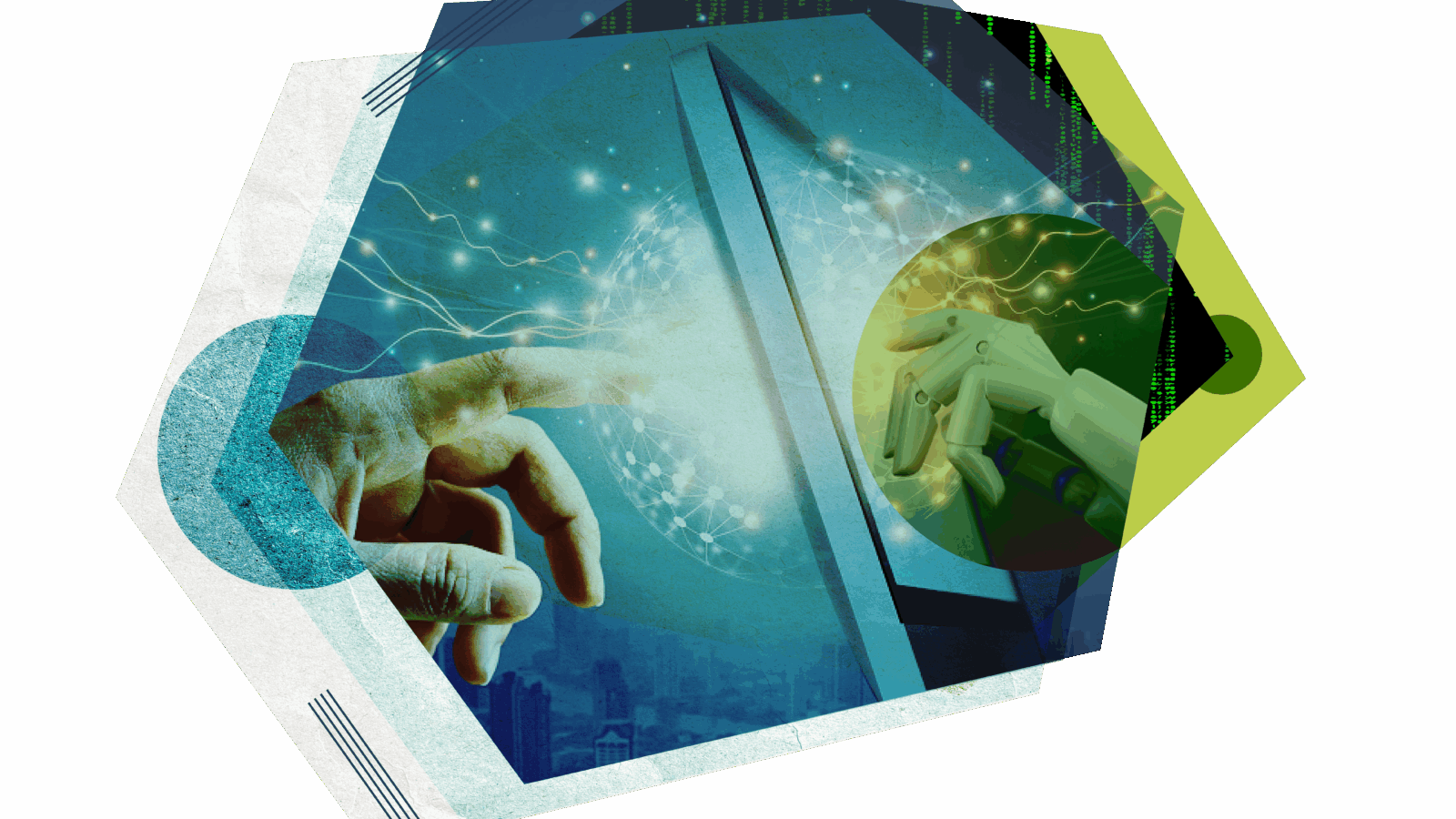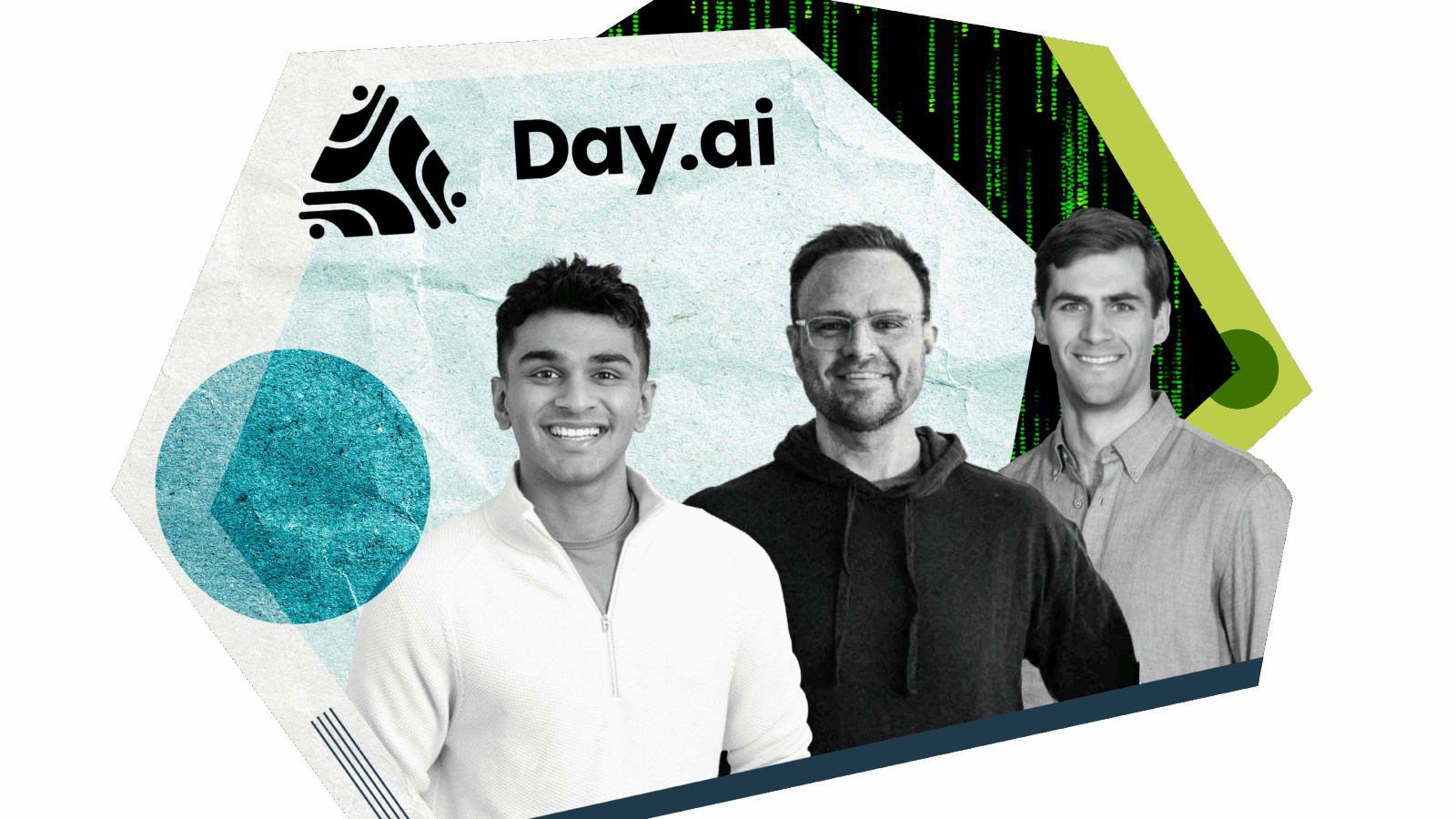Lessons from Doss on building an ‘anti-ERP ERP’ platform
Doss co-founder and CEO Wiley Jones shares how reversing the traditional ERP model — making software fit the business, not the other way around — solves real customer problems, in this episode of Systems of Action.
Most of the founders in the emerging AI-native systems of record (SoR) market we’ve been following were inspired to take on legacy giants after spending years working for them. Doss co-founder and CEO Wiley Jones’ inspiration came from building a robotic pet toy in Roomba’s Chinese factory.
After graduating from the University of Illinois Urbana-Champaign in 2017 with a degree in mechanical engineering, Wiley spent about 18 months of the next three years in China as a hardware engineer for Sprite Robotics. While working on materials management for a production run, Wiley learned that even though his company only produced 40,000 items a year in the factory and iRobot produced a million Roombas, both businesses were beholden to material planning on a Wednesday, slowing everyone’s production process down. This was simply because of the production flows built into the factory’s enterprise resource planning (ERP) system, and no one was going to go in and configure it to accommodate the little pet toy maker. Wiley soon realized this was happening across all kinds of factories.
“Companies had to modify their business process and physical process in order to match the greatest common denominator of software applications,” he told us recently.
Wiley saw the opportunity for a startup to address ERP inefficiencies for small-to-midsize businesses building in the physical world, but he didn’t tackle it head on until he reconnected with his friend from undergrad, Arnav Mishra, who was building construction billing software as a founding software engineer at Siteline. The two launched Doss in late 2022 in San Francisco with the premise: “Don’t build your operations for software; Doss is software built for your operations,” and this past April raised an $18 million Series A.
"Doss is software built for your operations."
As part of our Systems of Action series, we invited Wiley to our SF office to share how Doss is building a new type of ERP platform that adapts and fits the needs of the diverse ways businesses operate around the world today.
Wiley is analytical and precise like any 10x engineer, but he pairs that with a sense of humor and wit that we think adds some dynamism to what could otherwise feel like a stuffy industry (Doss’ headquarters has a Nic Cage theme, the “Anti ERP ERP Club” company culture is a riff on a streetwear brand, a core Doss role has an acronym that “means nothing;” the list goes on).
We think Wiley and his team completely align with our core Systems of Action thesis, and we encourage you to check out the full interview below. In the meantime, we’ve gathered several core insights from the chat we’ve been mulling over.
Insights for founders when building ERP Systems of Action
- Customers care about results more than AI branding: Doss is AI-native but gets past customer skepticism around quick fixes by walking them through solutions without explaining the AI working in the background.
- Personal customer relationships are key: Legacy ERP providers are too big to have on-call, 1:1 connections with customers, and startups can take advantage.
- Have your point solution tied to a platform: To break through a customer’s “armor,” Doss can land with a solution to a specific customer problem or workflow but maintains a “land and expand” strategy through its modular platform offerings.
- Getting to shared solutions builds efficiency: Doss looks for underlying issues to solve across multiple pain points to make the customer experience as simple as possible.
Sometimes the magic of AI should be hidden
While startups and corporations alike have been using AI branding as much as possible the last couple years, Doss is taking the opposite approach. At least as of this writing, you won’t even find “AI” anywhere on Doss’ website.
Using AI to configure processes “is powerful for time to value, but it’s not the feature in and of itself, it’s the thing that enables value for the customers,” Wiley said. He said his team learned that their customers, operations and finance professionals, simply don’t care about AI buzzwords.
That said, we know that many other AI-native SoR companies have customers that will be looking for that, and in that case they should tout it. What we find interesting about Doss’ approach is that they focus on the process of the “magic moments” themselves rather than relying on AI branding to sell for them.
“Technology is indistinguishable from magic, right?” Wiley says, quoting Arthur C. Clarke. “We have to defy people’s expectations of these systems — show them something magical right in front of their eyes for them to believe it.
For Doss, that means walking a customer through taking processes that employees normally have to configure—like demand planning or consolidating invoice processes for unique customer requests —and bringing them to the application layer. With these types of walkthroughs, they can show their customers how they can save tens of thousands of dollars through automation, without triggering a bias against an AI “quick fix.”
Develop customer relationships on a personal level
The world of ERPs is often esoteric for anyone whose role doesn’t require them to work closely with one, but Wiley said that while people outside the industry may joke that they have no idea what big players like SAP and Oracle even do, “the answer is they do everything,” and that being “faceless” and in the background is actually intentional.
He said that these legacy providers’ approach and solutions may work well for large enterprises, but that Doss is designed around human-to-human relationships.
To make that happen, the team relies on PMOs. It’s an acronym that normally would refer to the project management office, but is one Wiley repurposed as an individual role, pronounced “p-moe,” a hands-on product manager. From the job description: “The reason we created this job was because we wanted one person to span the pre-sale and post-sale so that the ‘understanding technical customer needs and solution design’ doesn't get thrown over the wall after the deal is signed. When a customer asks, ‘This is great and all, but who's going to be actually doing the work?’ our PMOs can answer, ‘You're talking to them!’"
Break through ‘armor’ with a point solution but have a platform attached
In our working Systems of Action roadmap, we explore the challenge SoR startups have in front of them if they’re planning on taking on entrenched legacy competitors. When Doss is going for a greenfield sale, they just need to convince a young company to adopt its ERP. When Doss is going for a brownfield sale, they need to convince a more mature business that Doss is worth replacing part of an existing SoR ecosystem.
As Wiley put it, “With brownfield, it’s less of a field, and it’s more like you’re trying to redo the foundation of a skyscraper,” after the skyscraper has already been built.
Doss is taking a traditional wedge approach, where a point solution for customers is followed by a platform that fills in the space it makes. Switching metaphors, Wiley likened Doss to an armor-piercing round. “If you have a platform that provides the mass and the inertia to drive behind this point solution that is the entry point into this business, then it's real ‘land and expand,’” Wiley told us.
If over the course of five to ten years, Doss will continue to invest and build, he explained, then customers will be primed for adopting their software as an AI-powered end-to-end ERP solution.
What makes Doss 10x better than other ERPs? Their ‘mundanity of excellence’
In 1989, the sociologist Daniel F. Chambliss published an essay titled “The Mundanity of Excellence.” It was an overview of his research into what separated Olympic swimmers from their high-performing but not elite peers, and the primary takeaway was that it was the materially better quality of their training regimens, not the quantity of hours invested into them.
As Wiley summarized it: “If you want to have qualitatively different results, then you need to do qualitatively different things. For Doss? “Our qualitatively different approach is instead of building the end feature, we build the underlying abstraction,” he said. Put more simply, it’s about “looking at real customer use cases and trying to back them out into their essence.” It’s a process that requires more time investment up front but results in efficiency gains and customer satisfaction that compounds over the long term.
One of Doss’ first customers was a coffee company, and it sells its coffee through wholesale, e-commerce, and retail. Each customer type requires specific file formats and mappings for a unique accounts payable process. Doss could have reinvented each process for them separately, but instead worked toward a single “Issue” prompt, a magic moment that makes their customer’s job as simple as possible. To make that happen, Doss had to build a composable database, a workflow editor, a form builder, and a file generator with mappings between those systems. “So you have four really complex abstractions for this one magical moment,” Wiley said. And if a new customer has their own quirky file type requirement, a configuration takes Doss just 30 minutes to incorporate, keeping the magic from being lost.
Take advantage of generational tailwinds
We’re biased, but we loved hearing Wiley share the same excitement around our core Systems of Action thesis.
He explained that the end of life (EOL) deadlines for legacy ERPs are coming up, a generation of people trained on those systems are retiring, and generative AI is rapidly improving. It’s “literally every possible tailwind,” he said.
Yes, a startup taking on legacy ERPs, or SoRs in general, is as David and Goliath as it gets. But if there was ever a moment to disrupt the incumbents, it’s now.
“Everyone is talking about generative AI, but the bottleneck at the end of the day is still humans,” Wiley said, and that’s why they are embracing the human interactions mentioned earlier. In order to achieve this disruption, it is ultimately up to startups to demonstrate that AI-native ERPs (and other SoRs) can be superior.
This series’ name comes from how AI is moving systems of record, the sources of truth for an enterprise’s data, into “Systems of Action.” As we build out our roadmap for emerging opportunities in enterprise resource planning (ERP), customer relationship management (CRM), and human capital management (HCM), we’ll be sharing our conversations with founders daring to challenge deeply-entrenched incumbents.
Subscribe to Atlas and our YouTube channel to never miss an interview.







